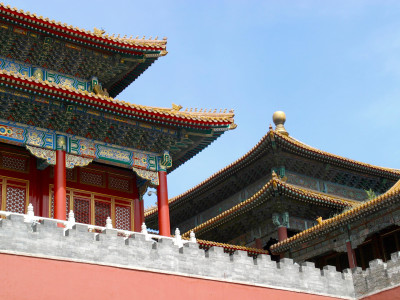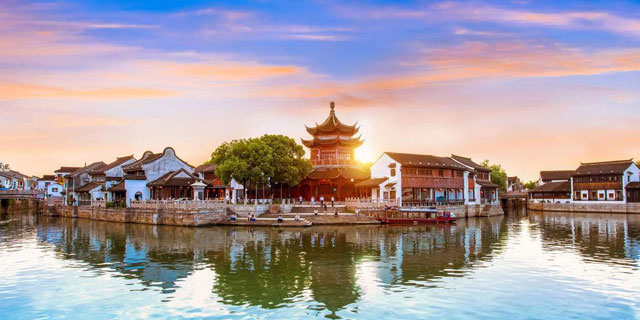20 Handy Suggestions For Choosing China Tour Sites
Wiki Article
The Best Regional Cuisines To Try In China: Top 10 Tips
1. Learn about the Eight Culinary TraditionsTip: Familiarize yourself with the eight main Chinese dishes: Sichuan, Cantonese, Shandong, Jiangsu, Fujian, Hunan, Anhui, and Zhejiang. Each has unique flavors, cooking techniques, and dishes.
Pro: You can use it to plan your culinary journeys by what you enjoy.
Con: It's hard to remember the specifics of each dish.
2. Enjoy local cuisine
You should try the local cuisine, such as Peking Duck, Xiaolongbao, or Hot Pot located in Chengdu.
Pro: Ensures an authentic and culturally rich dining experience.
Con: It can limit your ability to explore other regional cuisines you're visiting.
3. Be aware of local flavours
Tips: Sichuan dishes are spicy and painful to the taste. Cantonese foods are light and fresh. Jiangsu food is sweet and delicate. Select dishes that are spicy to your tolerance.
Pro The benefit is that you will be able to select dishes suitable for your tastes and not have them shipped back.
Con: Certain flavors are hard to master and might require lots of trial and error.
4. Explore Street Food
Take note of the unique street food options in each city. For instance there is Jianbing (savory burgers in Xi'an) or Roujiamo(Chinese crepes)in Beijing. Take a bite of local food.
Pro: Street foods are inexpensive, easy to prepare and provide glimpses of the life in your neighborhood.
Con: Hygiene is sometimes a concern. Choose vendors who have the highest turnover.
5. Learn Basic Dining Etiquette
Tip: Learn about Chinese dining traditions, including eating meals with family members. Also, avoid sticking chopsticks in rice with the up-right position.
Pros: It shows that you are a loyal steward of the local culture while enriching the dining experience.
Con: It takes time to understand and adapt to new manners of conduct.
6. Ask Locals for Recommendations
Locals know the most delicious dishes or restaurants are in their local area. Request advice.
It will help you avoid tourist traps while still finding hidden gems.
Cons Con: Communication can be difficult because of language barriers.
7. Be open to new ingredients
Tip: Regional cuisines could include unusual ingredients, such as bamboo shoots, lotus root or stinky tofu. Approach new foods with curiosity.
Pro: Increases appreciation for Chinese culinary culture and widens palette.
Con: Certain dishes might not be appropriate for your taste buds or diet restrictions.
8. Accommodate Dietary Restrictions
Tips: You can use Mandarin phrases to express preferences or allergies. For example, "Wo bu Chi Rou" (I don't eat meat).
Pro: A more secure dining experience that is tailored to your individual requirements.
Con: Certain foods can be restricted in terms of certain diet restrictions.
9. Pair Food and Drinks Regionally
Try the local drinks like tea from Fujian or Baijiu in northern China.
Pro: It enhances food and gives a deeper experience.
Cons: Some people might not enjoy the strong flavor of baijiu.
10. Avoid Overordering
Tip: Chinese meals are usually served family style. Order conservatively, and then increase when needed.
Pros: It reduces food waste and allows you to sample various meals.
Con: Due to the variety of options it is tempting to buy too much.
Explore the regional cuisines of China: Benefits
Diverse Flavors: Taste an array of delicious tastes, techniques, and ingredients.
Cultural Insight: Increasing your knowledge of regional traditions and identities.
Cost-effective: Local food and snacks can be found at affordable prices.
Memorable Experiences: Eating the most famous dishes of their region of origin creates lasting memories.
Cons of Exploring Local Cuisines in China
Hygiene concerns: Some small eateries or street food may not meet international standards for cleanliness.
Language Obstacles: Menus and explanations may only be translated into Mandarin which makes it difficult to order.
People who aren't familiar with certain ingredients may be unable to tolerate certain flavors or textures.
Dietary restrictions: People with severe food allergies or strict vegetarians can struggle to eat in certain areas.
You can tackle any challenge with these strategies and being adventurous. Read the best visit this popular travel spot for more info including zechawa valley tour route, eating in dunhuang, chinese wood carving originated in neolithic period, shopping in macau, some gifts from china, ancient dapeng fortress, jiuzhaigou, naked marriage in china the most fashionable wedding style for the 1980s, chinaexpeditiontours.comattractions, top three buddhist temples in chengdu and more.

Top 10 Tips For Fees And Photographic Rules For China Temples
1. Tip: Check entrance fees in advance. Many temples have an entry fee that can vary from Y=20 to Y=200. For a budget-friendly trip, research ticket prices before you leave.
Pro The benefit is that you will be able prepare the correct amount of cash or electronic payment and be able to avoid unpleasant unexpected surprises.
Con: Unexpected additional costs like special exhibit fees can occur.
2. Bring cash or digital payment
You are able to pay only in cash at certain temples or using popular Chinese payment methods such as WeChat Pay and Alipay.
Pro: Easy entry and pay without any delay.
Cons: Limited choices for foreigners unfamiliar with or unaccustomed to digital payment apps.
3. Find signs that say "Photography"
If you're unsure if photography is allowed, always be sure to look for indications. A lot of temples prohibit photography within their sanctuaries, or in close proximity to sacred artifacts.
Pro: It prevents unintentional disrespect or violation of rules.
Con: Some rules differ in specific areas of the temple. Attention to detail is essential.
4. Avoid Flash Photography
In places where it is permitted to take photos, avoid using flash as this can result in damage to artifacts, or disturb worshipers.
Pro: Protects temple's artwork and the surrounding.
Insufficient lighting can cause poor photography.
5. Respect Worshippers' Privacy
Tips: Do not take pictures of people who are praying or participating in religious rituals without their permission.
Pro: Shows an awareness of culture and respects personal space.
Cons: Limits your ability to capture the temple's ambience fully.
6. Be sure to follow the Drone Regulations
Tip - Drones are usually prohibited within temples. If you intend to make use of a drone for photography from the air, you should check local laws.
Pro: No fines, no confiscation.
Pros: There are a limited number of angles from which to shoot.
7. Prepare for Additional Fees
Tips: Some temples charge an extra fee for photography permits. This is particularly true for equipment like DSLRs as well as tripods.
Pro: This ensures that images are captured with high-quality and legal.
Cons: Adds to your total expense for the trip
8. Dress sensually
It is important to dress appropriately in temples. Indifference for the temples' decorum can result in being denied entry, or having certain areas restricted.
Pros: You'll be able to blend in and show respect to the setting of worship.
Con: You may need to do some extra preparation in hotter weather.
9. Avoid the crowds in photo shoots
Visit the park early in the day or late in afternoon to avoid crowds. This will make it easier for you to take photos without being blocked.
Enhances the quality of photographs and experiences.
Cons: It may be difficult to change your schedule.
10. If you are unsure, ask permission.
Tip: When in doubt regarding photography regulations, consult temple staff or the signs for clarification.
Pro: You can prevent unintentionally breaking rules.
Con: Language barriers might make communication difficult.
The negatives of paying fees and photography guidelines
Respect for Culture: Adherence to the local customs and beliefs.
Artifact Preservation: This safeguards fragile artworks and structures.
Positive Experiences : Avoid confrontations between temple staff members or worshippers.
Legal Compliance - Helps avoid penalties for violating photography regulations.
Pros of Fees and Photographic Rules
Costs Increased: Additional fees such as entry fees or photography permits can increase the cost.
A limited creativity: Limitations can hinder the perfect shot.
Language Barriers: Difficulty comprehending local signage or interacting with staff.
Time-consuming research: Researching and preparing for the future requires additional effort.
You can have a relaxing, enjoyable and respectful trip to China's temples if you adhere to the rules and regulations. This will also ensure their spiritual and cultural integrity. Check out the recommended learn more about this destination for website advice including guanlin temple, shopping in nanjing, chaotianmen dock%EF%BC%8C a major water transportation hub in chongqing, taishan tour maps, popular beijing night markets, taishan tour maps, shopping in xi an, kweichow moutai the best and most famous liquor in china, china built the worlds deepest high speed railway station under the great wall, ganden temple and more.
